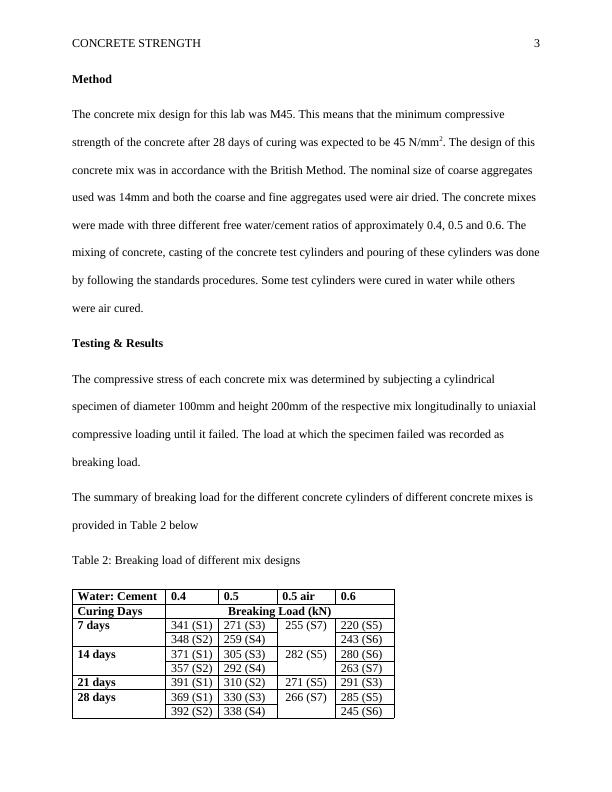Concrete Strength: Effects of Water/Cement Ratio on Workability and Compressive Stress
Added on 2022-11-11
9 Pages1795 Words319 Views
End of preview
Want to access all the pages? Upload your documents or become a member.
Concrete Mix & Cast Report - Design, Constituents, Results
|7
|1051
|442
Civil Engineering | Assignment
|19
|2655
|15
Structural Lightweight Concrete for Thermal Energy Storage
|4
|868
|73
Soil and Materials Lab Report on Concrete Mixing Ratio and Strength Testing
|16
|2506
|328
Bendable Concrete 13 Running Head: Polyvinyl Alcohol in Creating a Bendable Concrete
|15
|3774
|405
Engineering Material: Properties and Testing Methods
|15
|3111
|144


